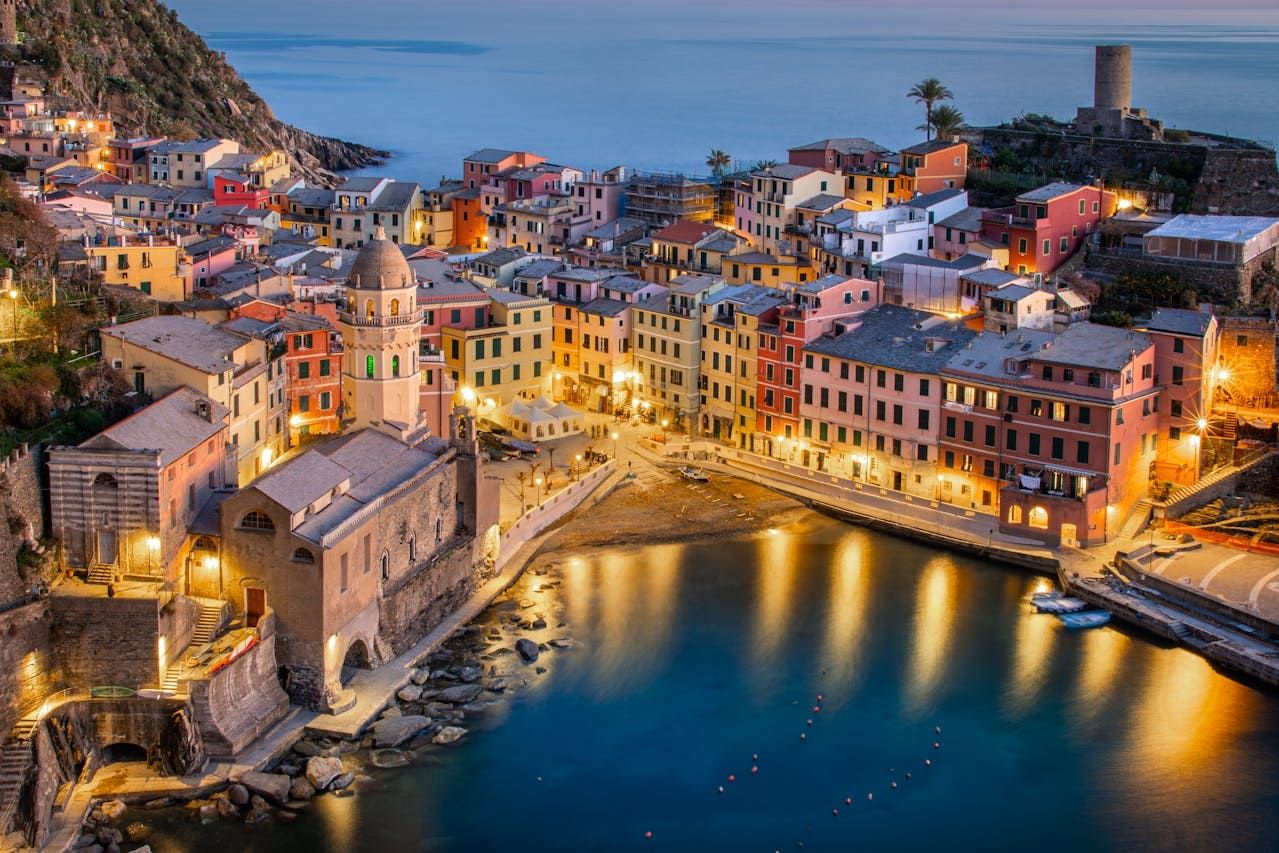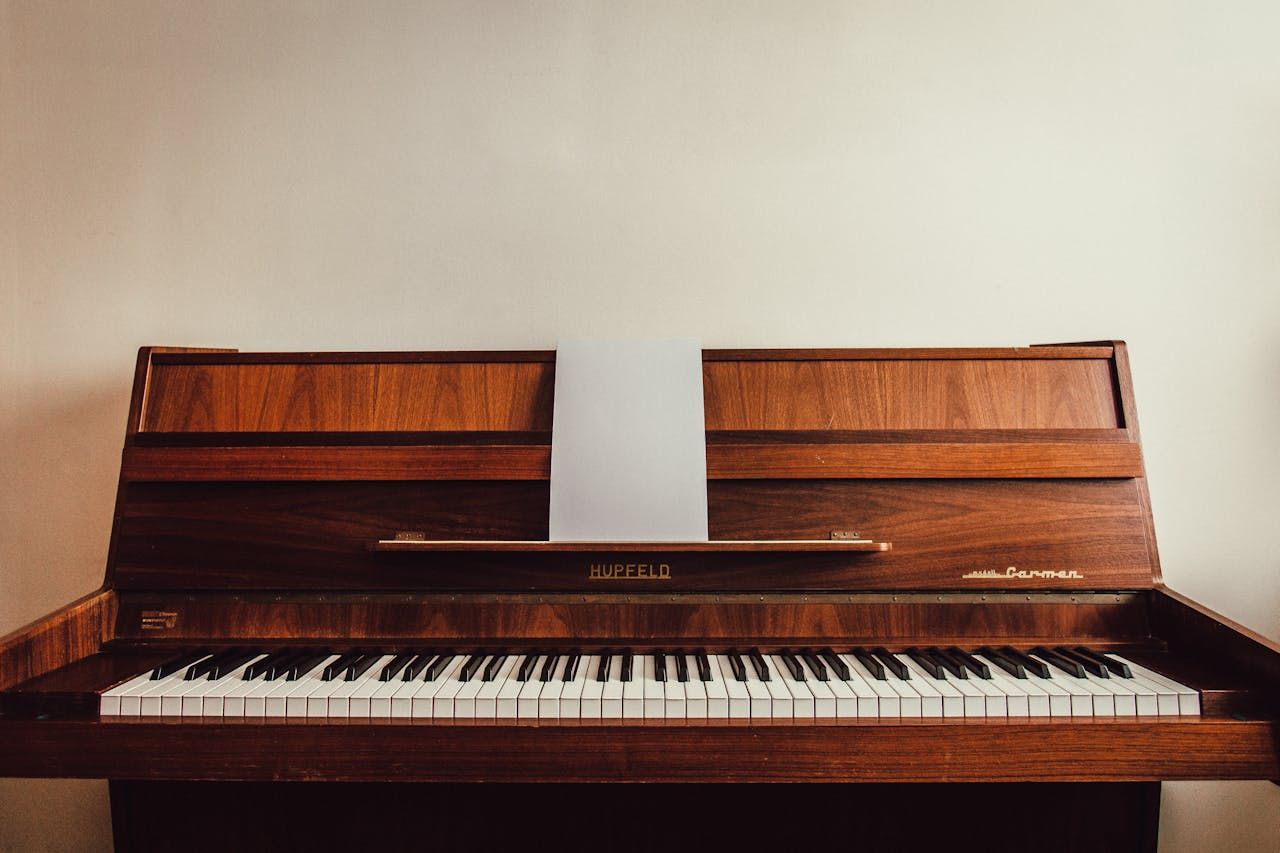When you think of Italy, pasta, pizza, and piazzas probably come to mind. But Italy is much more than these well-known images. This article uncovers fun, interesting, and little-known facts that reveal the real Italy beyond what’s taught in the classroom.
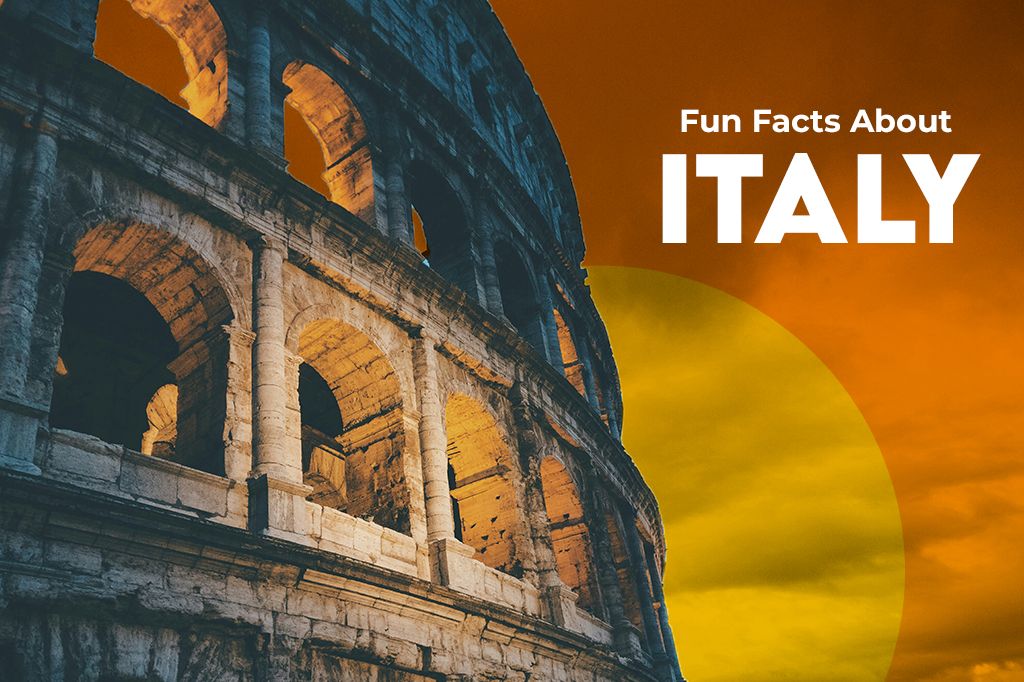
Picture by BENCE BOROS on Unsplash
Ready to Discover Italy Like Never Before?
If reading about all these amazing places has you daydreaming about a trip to Italy, here’s something that can seriously upgrade your experience: try using an eSIM.
It’s basically a digital SIM card that lets you connect to local networks without having to visit a store or swap out your physical SIM. You just download it before or after you land, and you’re online instantly.
The best part? You can try a FREE eSIM from Yoho Mobile and get instant access to mobile data in most countries. And if you decide to get a plan afterward, use code YOHO12 at checkout for 12% off.
15 Fun Facts About Italy
1. Italy Contains Two Countries Inside Its Borders
Most people are surprised to learn that Italy actually surrounds two completely independent countries: Vatican City and San Marino.
Vatican City is tucked inside the city of Rome. It’s the smallest country in the world and is home to the Pope and the Roman Catholic Church. It officially became an independent country in 1929 and has its own government, laws, and even its own passport and currency. Further north, high in the hills, lies San Marino, one of the world’s oldest republics, has managed to stay independent for centuries, thanks to its location and long-standing political agreements.
Even though both of these microstates are entirely surrounded by Italy, they are separate nations. What’s more, travelers can visit them without crossing any hard borders.
2. You Can Have Breakfast in the Alps and Dinner on the Beach
Italy’s geography allows skiing in the mountains and relaxing on the beach on the same day. The country’s northern regions are home to the stunning Alps and Dolomites, where places like Madonna di Campiglio, Cortina d’Ampezzo, and the Aosta Valley offer world-class slopes. From there, it’s just a few hours’ drive to the coast. Whether you head east to the Adriatic Sea or west to the Tyrrhenian or Ligurian coasts, you can trade snow for sunshine before the day ends.
3. Espresso Has a Legal Definition in Italy
Coffee in Italy is a serious tradition. In fact, espresso has a legal definition, thanks to the Italian Espresso National Institute. This group sets exact standards for how a true Italian espresso should be made. That means 7 grams of finely ground coffee, brewed at 9 bars of pressure, and extracted in 25 to 30 seconds. The final cup should be about 25 to 30 milliliters, topped with a perfect layer of crema. These rules help keep espresso quality consistent across the country.
There are also unwritten rules when it comes to coffee culture, and one of the big ones is about when to drink a cappuccino. In Italy, cappuccino is strictly a morning drink. After 11 AM, ordering one might get you a few raised eyebrows. That’s because many Italians believe drinking milk after a meal can upset digestion. A milky coffee like a cappuccino just doesn’t sit right after lunch or dinner, at least according to tradition.

Photo by Matt Hoffman on Unsplash
Fun Fact: The Italian Espresso National Institute regulates how espresso is made.
4. Italy Is Home to the World’s First Pizzeria
The world’s very first pizzeria can be found in Naples. Antica Pizzeria Port’Alba started back in 1738 as a simple food stand for street vendors. By 1830, it became a full restaurant at Via Port’Alba 18, and more impressively, it’s still there today. This pizzeria quickly became a favorite for locals, especially artists and students. The menu was simple at the time, with toppings like garlic and olive oil. One interesting fact is that they used a system called pizza a otto, where people could eat now and pay up to eight days later.
5. Italy Has the Most UNESCO World Heritage Sites
Italy is home to more UNESCO World Heritage Sites than any other country: 60 in total as of 2024. These include cultural treasures, natural wonders, and places that combine both, all recognized for their global importance.
While cities like Rome and Florence are world-famous for their art and architecture, many lesser-known sites across the country are just as incredible and far less crowded. Ancient rock carvings in Valcamonica, the peaceful wetlands of the Po River Delta, the cave homes of Matera, or the volcanic beauty of the Aeolian Islands. More than just landmarks, they’re pieces of a living story that makes Italy unlike anywhere else in the world.
6. Italians Use Over 250 Hand Gestures to Communicate
One of the most obvious fun facts is that in Italy, speaking is about how you move your hands. Italians use more than 250 hand gestures to express everything from emotions to everyday thoughts. Making gestures almost like a second language.
One of the most well-known is the “finger purse”—fingertips brought together and moved up and down—which can mean “What do you want?” or show frustration or disbelief. There’s also the “chin flick,” where you brush your fingers under your chin and flick outward to say “I don’t care.” The “prayer clasp,” with palms pressed together and a slight movement, is used when making a sincere request. And when something’s great, you might see the “OK” sign, with the thumb and index finger forming a circle, meaning “perfect.”
These gestures say more than words and are deeply tied to Italian culture. But since some have strong meanings, using the wrong one at the wrong time can cause confusion or offense. Learning a few of the most relevant gestures and when to use them can help you get along with Italians better and maybe even speak a little “with your hands” yourself.
7. Italy Invented the Piano
Many people don’t realize that the piano was invented in Italy. Around the year 1700, a man named Bartolomeo Cristofori from Padua built the very first version of the instrument we know today. He worked for a powerful family in Tuscany and designed a new kind of keyboard instrument that could play both soft and loud sounds, something the harpsichord couldn’t do. His invention was called the gravicembalo col piano e forte, which means “harpsichord with soft and loud.”
Cristofori’s breakthrough was using small hammers to strike the strings instead of plucking them. This gave musicians more control over how each note sounded, and it’s still how modern pianos work today. The oldest surviving piano he built, from 1720, is on display at the Metropolitan Museum of Art in New York. Two others are kept in Rome and Leipzig.
And the piano isn’t Italy’s only major invention. Italians also gave us the battery (thanks to Alessandro Volta) and an early version of the telephone (created by Antonio Meucci). So, beyond art and food, Italy has made huge contributions to science and music too.
8. The World’s Oldest University Is Still Operating in Italy
Italy is home to the oldest university in the world that’s still running: the University of Bologna, founded way back in 1088. Unlike most universities today, it didn’t start with a big campus or official buildings. Instead, classes were held wherever space was available, be it in churches, homes, or rented rooms. What made it especially unique was that it was run by the students, not the church or government. Students actually hired and paid the professors themselves, which was very rare for the time.
At first, the school focused mainly on Roman law and religious (canon) law, and students came from all over Europe to study there. Over the years, it added more subjects like art, medicine, and science. Today, the University of Bologna is still a major place for learning. You can visit the city and see how the university shaped its history and architecture, or even apply to study there if you’re looking for a school with deep roots and a global reputation.
9. A Sunken City Beneath an Italian Bay
Just off the coast near Naples, you can find a city beneath the sea. The ancient Roman town of Baiae now lies underwater and has become a one-of-a-kind archaeological park. This once-luxurious resort, popular with Roman emperors like Augustus and Nero, experienced bradyseism, a natural process where the land gradually rises or sinks because of underground volcanic movements. In Baiae’s case, the land sank, and the sea moved in.
Today, visitors can snorkel or scuba dive through the ruins, swimming past ancient villas, mosaics, marble floors, statues, and even paved streets just a few meters below the surface. Glass-bottom boat rides and special viewing platforms let you see the city without diving in.
10. Italy Has a Law About What You Can Name Your Baby
In Italy, you can’t just name your baby anything you want. There’s a law that bans names considered embarrassing, ridiculous, or offensive, mainly to protect children from teasing or trouble later in life.
For example, one family tried to name their son “Venerdì” (Friday), but a court rejected it. The name reminded people of the character Friday from Robinson Crusoe, who was seen as a servant, and the court worried it could lead to the child being mocked. The family was told to choose a more traditional name, like that of the saint for the day he was born.
Other names that have been banned include Adolf Hitler, Osama Bin Laden, Nutella, and even fictional names like Goku or Dracula. Names that are brand names, foreign words not suited to Italian spelling, or even surnames used as first names can also be rejected.

Italy isn’t the only country with baby name rules, but it takes enforcement seriously. Photo by William Fortunato
11. Italians Celebrate a Giant Food Fight Every February
In the town of Ivrea, in northern Italy, February means one thing: The Battle of the Oranges. This wild event is part of the Ivrea Carnival and has deep roots in local history, as a reenactment of a legendary rebellion. According to the story, a brave miller’s daughter named Violetta stood up to a cruel medieval ruler who abused his power. She eventually killed him, sparking an uprising. Today, that spirit of resistance is remembered through this unique battle.
During the event, teams of people on foot (the townsfolk) throw oranges at others riding in carts (the tyrant’s army). It all builds up to Shrove Monday, when the orange-throwing is at its most intense. The battle lasts several days and follows long-standing local traditions.
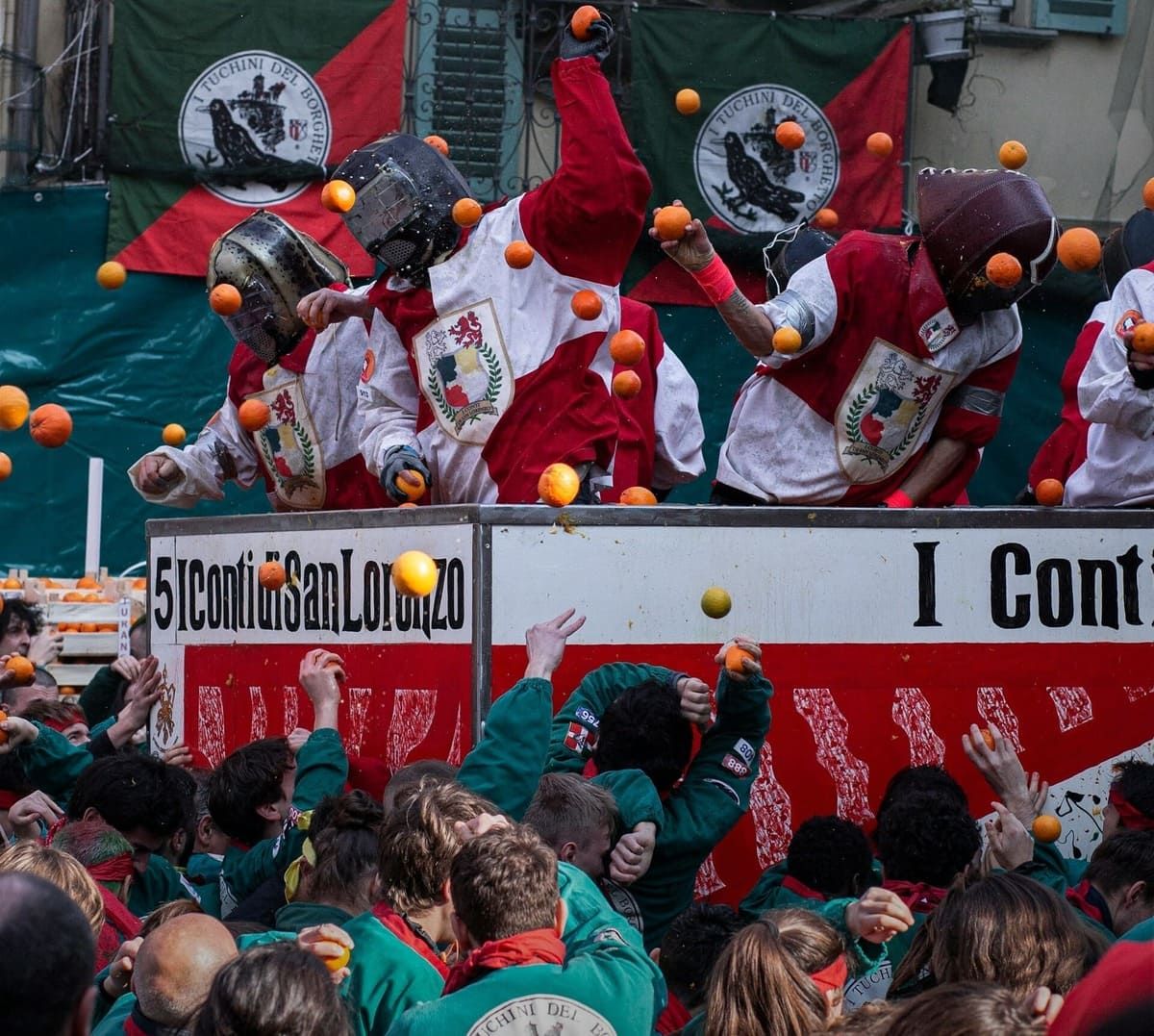
Other unusual Italian festivals include the Feast of the Tarantula in Apulia and the Infiorata, where entire streets are covered in flower art. Photo by Samuele Giglio on Unsplash
12. You Can Find a City with No Streets—Just Waterways
In Venice, you won’t find cars or typical streets. Instead, the city is built on water, with more than 150 canals taking the place of roads. People get around by walking along narrow paths or using boats like gondolas, water taxis, or vaporetti (water buses).
Venice was built on a group of small islands in a lagoon, and its canals have always been the main way to move from place to place. Bridges connect the islands for pedestrians, but boats do most of the heavy lifting (literally and figuratively.)
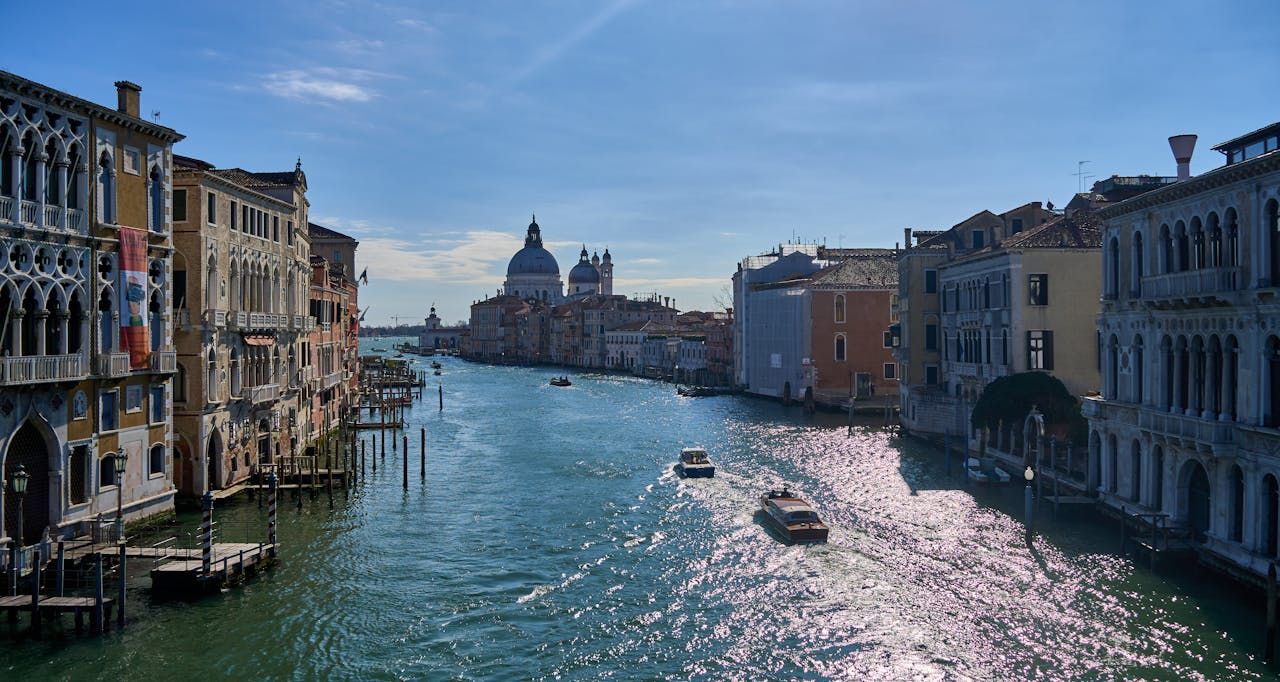
While Venice is the most famous water-based city, fun fact: it’s not the only one. Towns like Comacchio and Chioggia also have canals and boats instead of busy streets. Photo by Gotta Be Worth It
13. Italian Dialects Are So Distinct, Some Sound Like Other Languages
There are many regional dialects in Italy that can sound almost like entirely separate languages. Dialects like Sicilian, Venetian, and Neapolitan have their own unique words, grammar, and sounds shaped by centuries of local history. In fact, some of these dialects are so different from standard Italian and from each other that people from different regions might struggle to understand one another.
While the official Italian language is based on the Tuscan dialect, most Italians still speak their regional dialects at home or with friends.
14. Italy’s Roads Are Built on Roman Engineering
Many of Italy’s highways today follow the paths laid out by the Romans thousands of years ago. The Romans created a vast network of paved roads to connect cities across the peninsula, for moving armies, managing their empire, and trading goods.
The Romans were skilled engineers who built their roads with strong foundations, drainage systems, and straight routes whenever possible. Famous roads like the Via Appia, Via Flaminia, and Via Aurelia are still important routes, running alongside or underneath modern highways.
15. The Italian Statue of Liberty Is Older Than America’s
Most people think the Statue of Liberty is only in New York, but Italy has its version that’s actually older. Called the “Statua della Libertà,” it stands in Lecco, a town in northern Italy, and was built in 1876, before the famous New York statue.
Both statues are inspired by the Roman goddess Libertas, who represents freedom. While the New York statue was a gift from France to the United States, the one in Lecco was created to celebrate Italy’s independence and unity.
When you visit Italy, stay curious, ask questions, and take time to appreciate the many historical and cultural fun facts that make the country so unique.


